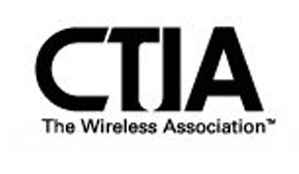FCC and carriers agree to make it easier to unlock phones

The Federal Communications Commission (FCC) and the major US phone carriers, AT&T, Sprint, T-Mobile, U.S. Cellular and Verizon Wireless, members of the CITA Wireless Association, announced six new principles to make it easier for users to unlock their cell phones) and other 3G/4G equipped devices.

Here are the new unlocking principles (PDF Link). They will start taking effect in the next three months and will be fully in place within 12 months.
1) Disclosure: Each carrier must post on its Website a clear policy on how and when pre- and post-paid wireless devices can be unlocked.
2) Postpaid Unlocking Policy: Carriers must either unlock devices or provide users with the information they need to unlock them after their contract has been fulfilled.
3) Prepaid Unlocking Policy: If you ask a carrier, they will unlock prepaid devices no later than a year after their initial activation, provided that you've met the payment, time, and usage requirements.
4) Customer Notice: Carriers that lock devices must notify users when their devices are eligible to be unlocked without an additional fee.
5) Response Time: Carriers must unlock eligible devices, or initiate an OEM request to unlock it, within two business days of a customer's request.
6) Deployed Military Personnel Unlocking: If you're deployed in the military, carriers must unlock the devices as your request if you're a customer in good standing.
Sounds good right? Well, it's not a sure thing yet.
Featured
In a statement, Derek Khanna, a Yale Law Fellow, who follows and comments on telecommunications policies, wrote, "This is terrific news. It's great for consumers and for competition in the wireless market. However, while this will make unlocking more available to consumers, it will still keep the technology itself as illegal."
Kahnna added that "if a consumer chooses to unlock his or her own device, let's say when they travel abroad, it is still a felony punishable by five years in prison. Which is why this unilateral decision by companies needs to be coupled with Congressional action to solve the underlying problem that Congress created."
Kahanna also noted that this isn't the first time the CITA has made nice about enabling phones to unlocked, but then didn't make good on their promises. The "CTIA's letter claims that they already have "competitive and robust unlocking policies," which was a similar claim as they made last year. That claim was shown to be a lie by NTIA [National Telecommunications and Information Association] when they investigated consumer's ability to unlock their phones. Therefore, given the demonstrated duplicity of these organizations and companies we will need to verify that these policies are actually being enacted and actually available to consumers rather than creating hoops for their customers to go through. If these voluntary principles becomes phone companies’ stated policy but then they don't actually follow their policy (as was done in the past) then we are no closer to helping consumers."
He continued, "Specifically of concern, the proposed policy notes that they will allow customers and former customers to unlock their phones when their contract expires. In the past, phone companies have required documentation that many customers did not have even though the phone company knew exactly who had purchased the phone for the sole purpose of making it harder to unlock the device. These types of games are unacceptable, and we expect the FCC to ensure that CTIA’s voluntary principles are actually enacted and unlocking is cheaply and easily available for consumers."
So, is this really the beginning of carrier freedom for smartphone and tablet owners, or is this just another ploy? We'll have to wait and see.
Related Stories: